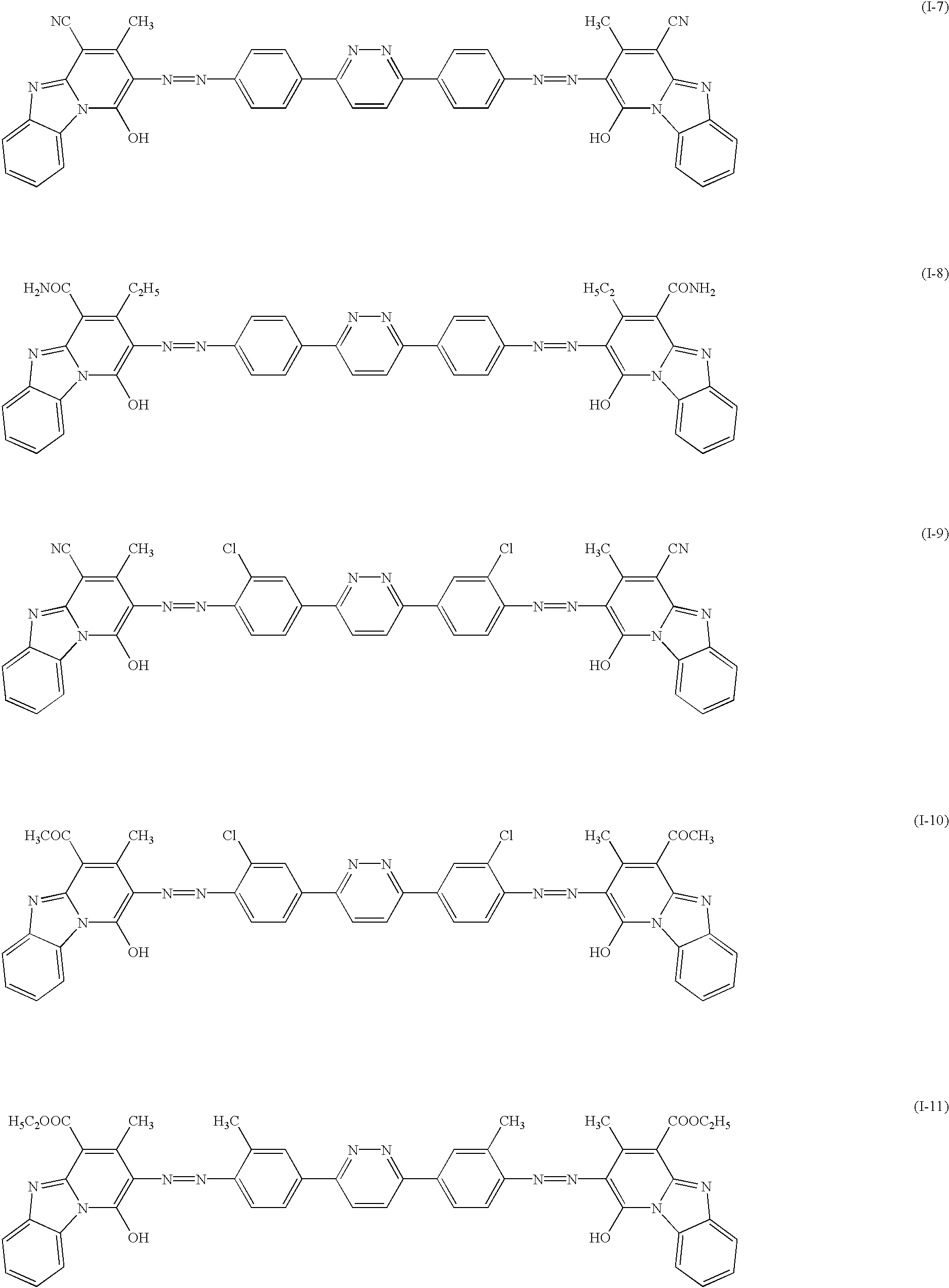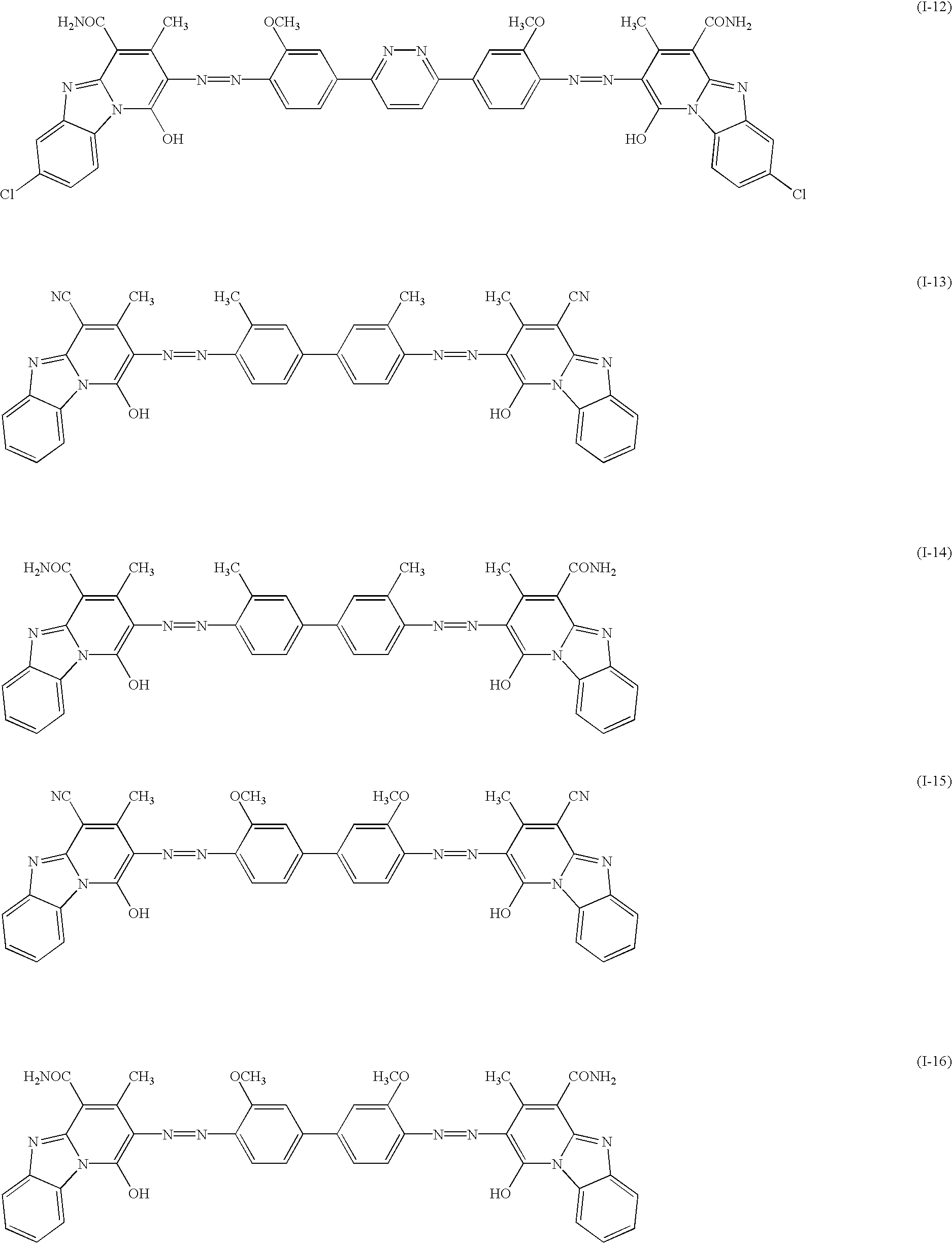Electrophotographic photoconductor
a photoconductor and electroclast technology, applied in the field of electroclastographic photoconductor, can solve the problems of inability to meet requirements, inability to achieve a satisfactory technology, and inability to resist repeated printing, etc., to achieve excellent printing durability and sensitivity, facilitate coating operation, and favorable
- Summary
- Abstract
- Description
- Claims
- Application Information
AI Technical Summary
Benefits of technology
Problems solved by technology
Method used
Image
Examples
example 1 (
E1)
An intermediate layer was formed by dip-coating the surface of the above-described substrate with a coating liquid and dried at 90.degree. C. for 30 min, to be a resin layer having thickness of 0.1 .mu.m. The coating liquid for the resin film of the intermediate layer was prepared by dissolving 10 parts by weight of an alcohol-soluble copolymerized polyamide resin CM 8000 (manufactured by Toray Industries Co., Ltd.) into mixed solvent of 45 parts by weight of methanol and 45 parts by weight of methylene chloride.
Then, a charge generation layer having film thickness of 0.2 .mu.m was formed by dip-coating the intermediate layer with a coating liquid followed by drying at 90.degree. C. for 30 min. The coating liquid for the charge generation layer was prepared by mixing 1 part by weight of poly(vinyl acetal) resin S-LEC KS-1 (manufactured by Sekisui Chemical Co., Ltd.) and 1 part by weight of the bisazo compound of formula (I-17) as charge generation substance with 150 parts by weig...
example 2 (
E2)
A photoconductor was fabricated in the same manner as in Example 1 except that the resin binder of the charge transport layer was replaced by 100 parts by weight of bisphenol Z polycarbonate of the formula (III-2) that had the values: Mw=90,703, Mz=166,894, Mn=42,031, Mz / Mw=1.840, and Mw / Mn=2.157.
example 3 (
E3)
A photoconductor was fabricated in the same manner as in Example 1 except that the resin binder of the charge transport layer was replaced by 100 parts by weight of bisphenol Z polycarbonate of the formula (III-2) that had the values: Mw=125,775, Mz=408,768, Mn=53,361, Mz / Mw=3.250, and Mw / Mn=2.375.
PUM
| Property | Measurement | Unit |
|---|---|---|
| polydispersity d2 | aaaaa | aaaaa |
| polydispersity d2 | aaaaa | aaaaa |
| polydispersity d2 | aaaaa | aaaaa |
Abstract
Description
Claims
Application Information
 Login to View More
Login to View More - R&D
- Intellectual Property
- Life Sciences
- Materials
- Tech Scout
- Unparalleled Data Quality
- Higher Quality Content
- 60% Fewer Hallucinations
Browse by: Latest US Patents, China's latest patents, Technical Efficacy Thesaurus, Application Domain, Technology Topic, Popular Technical Reports.
© 2025 PatSnap. All rights reserved.Legal|Privacy policy|Modern Slavery Act Transparency Statement|Sitemap|About US| Contact US: help@patsnap.com



